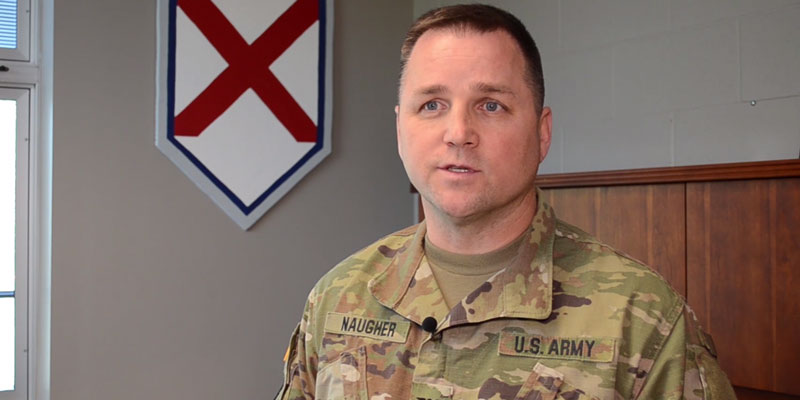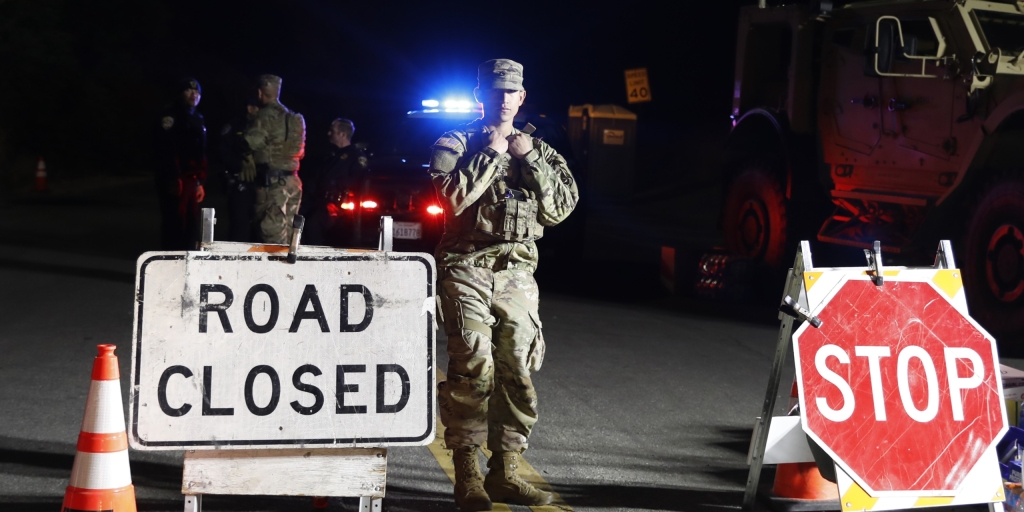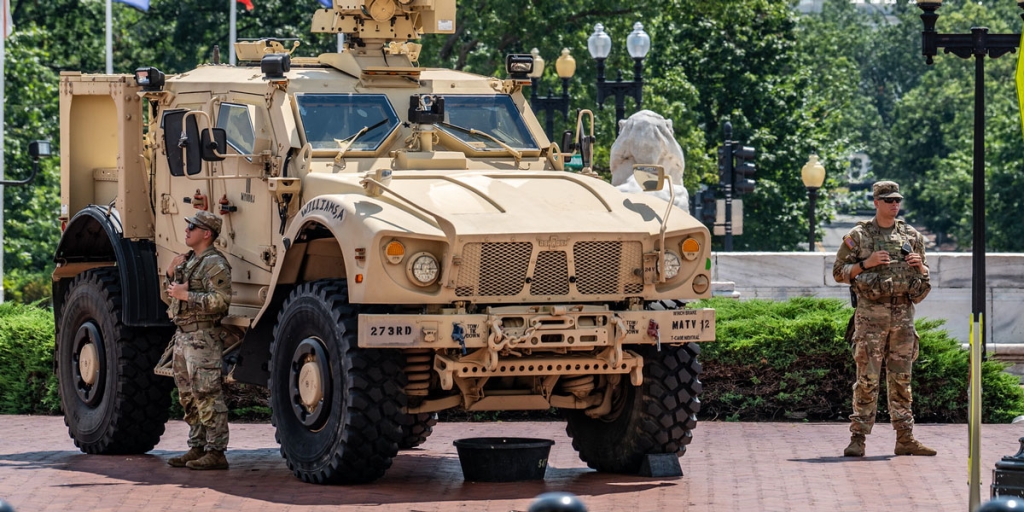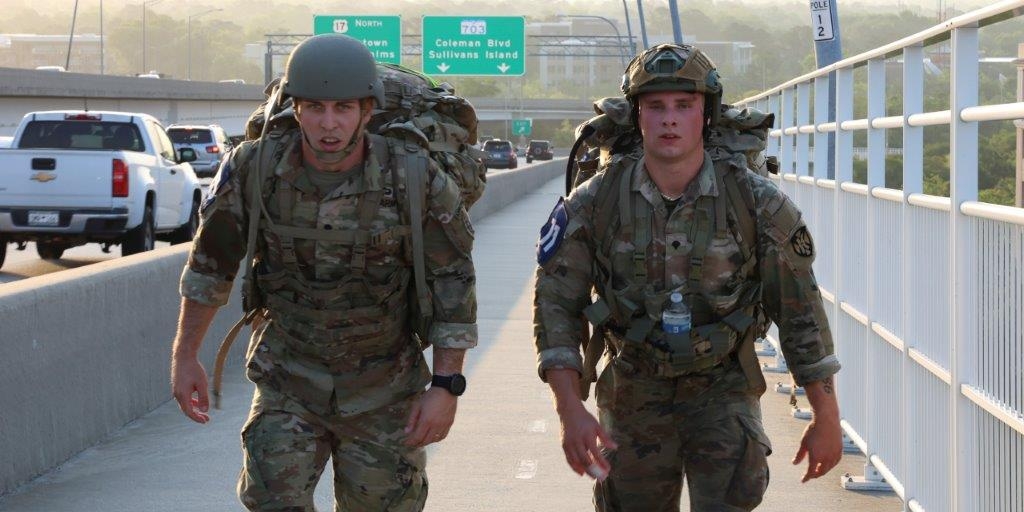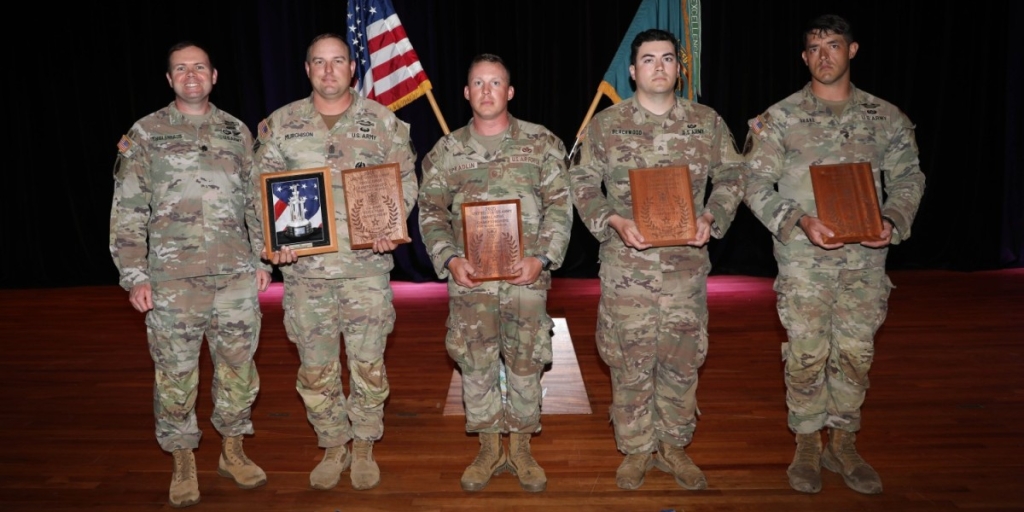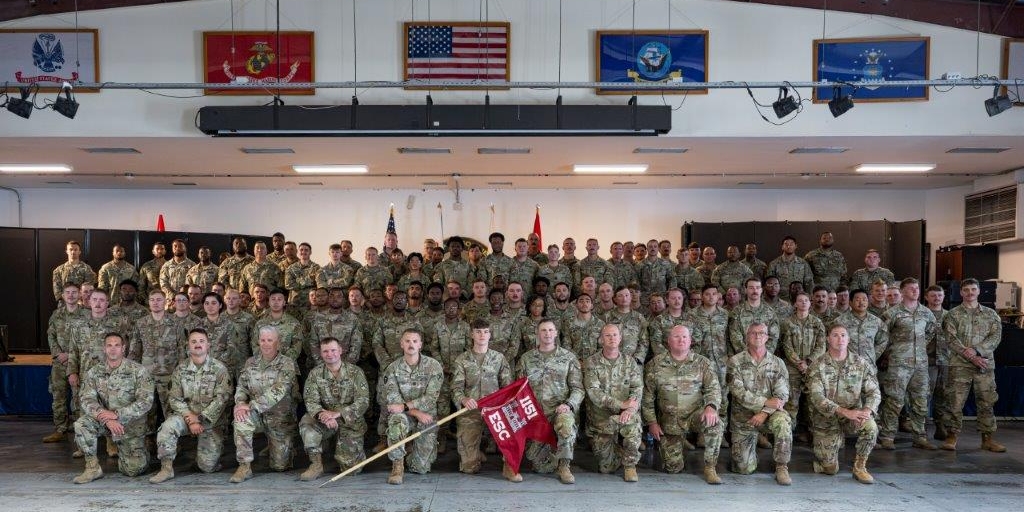On one of the most beautiful weeks of the year on Alabama’s Gulf Coast, those charged with responding to a hurricane are seeing the worst of devastation.
Inside Fort Whiting in Mobile, members of the 226 Maneuver Enhancement Brigade (MEB) had formed Task Force Tarpon and were taking on the devastating effects of Hurricane Alex that left destruction in Fairhope and Robertsdale in its wake.
In reality, the weather outside was so mild that even the flags on the pole at Fort Whiting were limp from a lack of a breeze, a far cry from the hurricane force winds soldiers and Emergency Management Agency officials are pretending leveled the majority of some communities.
Both the Alabama National Guard’s annual hurricane exercise and the governor’s exercise of the Alabama Emergency Management Agency’s hurricane plan are taking place this week. The goal is to stretch existing plans to the limits to ensure they hold up to the stresses and the unexpected shifts that come from a major hurricane striking Mobile Bay and into the inlet areas of the state.
In Alabama, the state’s EMA response is broken up into seven divisions. For hurricanes, Division A – which includes Mobile, Baldwin, Washington, Escambia, Clarke, Conecuh, Monroe and Choctaw counties – becomes the main effort. That means the 226 MEB based at Fort Whiting becomes the point of emphasis for the Alabama National Guard.
“I hope and pray that we don’t have a major event in Alabama,” said Col. Brian Naugher, commander of the 226 MEB and Joint Task Force Tarpon. “But rest assured if we do, the citizens of Alabama will have the response to the need when we get there.”
In the event of a hurricane, the Alabama National Guard activates the 226 MEB to become Joint Task Force Tarpon with assets ranging from route clearance teams to search-and-rescue boat and helicopter teams as well as high-water evacuation teams and military police to work with local law enforcement.
Kyle Eskridge, Division A director for Alabama EMA, said his agency has strong relationships with the National Guard and other entities to ensure a robust response.
“We’re stakeholders, we’re servers of the citizens of Alabama and what we want to do is ensure that we all know each other’s capabilities before the event instead of during,” he said. “So, to be effective and efficient in that manner, it’s always good to exercise. And we stay in communication constantly with each other. We’re not only exercising, we’re talking with each other, we’re training together.”
Whether it be tornadoes, floods, winter storms, hurricanes or other events, Alabama is known for having a strong working relationship between the National Guard and the EMA.
“Alabama’s got many hazards, but for me being down here with our two coastal counties here in the state of Alabama, (hurricanes are) always something that we keep our eyes on and I think we’re prepared,” Eskridge said.
He said the time is spent working on timelines, protocols and triggers to respond effectively in times of disasters.
With May 6-12 being Hurricane Preparedness Week, the emphasis is on those big tropical storms that make landfall as devastatingly massive storms.
“We cannot wait until the need arises to prepare,” Naugher said. “Last year, we had three opportunities to respond and we responded excellently.”
Eskridge said it was the work put in before the hurricanes of 2017 that made the response so effective.
“Everything that we do in emergency management and the EM community has to do with relationships,” he said. “If you can keep those relationships strong and, again, going back to understanding each other’s capabilities and personalities, it’s always good.”
For Naugher, the National Guard is the perfect organization for disaster response because the citizen soldiers are the same people who live, work and worship in the communities they’re assisting.
Naugher said Gov. Kay Ivey and Maj. Gen. Sheryl Gordon, adjutant general of the state of Alabama, have empowered the National Guard to do as much as local officials feel is needed.
“It’s all about helping each other, and every time that we’ve been called on from the National Guard, we’re there to respond and to help our neighbors in a time of need,” Naugher said. “As members of the Alabama National Guard, we live and work here. This is our home, too, so when we respond, we know that we are assisting our friends, families and neighbors.
“In many cases, our soldiers’ own homes have been impacted by hurricanes when they answer the call to help others. That’s the kind of commitment we see across the Guard. The people of this state always show their support for us and we appreciate that and owe them our very best when called on,” he said.
The early forecast from the Department of Atmospheric Science at Colorado State calls for 14 named storms in the Atlantic, with half of those reaching hurricane strength. It goes on to predict that three will be “major” hurricanes of Category 3 or higher, with sustained winds over 110 miles per hour.
Broad forecasts are not what concern Eskridge.
“It only takes one,” he said. “The forecasters can come up with as many scenarios as they can think of about how many we’re going to have. But one hurricane is too many, and it only takes one to impact people’s lives.”
That, he said, is why preparation is so important.
“We’re prepared and we’re going to continue to exercise like we’re expecting three hurricanes to hit the state this year,” Eskridge said. “We look at impacts and what kind of consequences that we can have in the state of Alabama, and we’ve got to try to prepare for them.”
Naugher said they owe it to Alabama.
“The kind of realistic training we are doing now will prepare us to better respond the next time we’re called on to assist our fellow Alabamians, because we all know it’s not if a hurricane will hit Alabama, it’s when,” he said. “The Alabama National Guard and the 226 MEB will be ready for that ‘when.’”
(Courtesy of Alabama NewsCenter)




